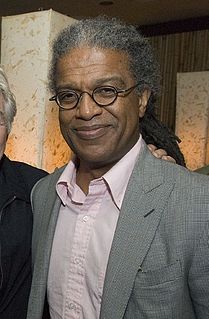Top 213 Quotes & Sayings by Jerry Saltz - Page 4
Explore popular quotes and sayings by an American critic Jerry Saltz.
Last updated on November 9, 2024.
Any critic will tell you that there are a few dealers where you get a little bit scared to go into their gallery, and that's unfair to them, to yourself, to the reader, and to the artist. But I just want to look. When I'm done looking and writing, I love talking to art dealers. They are so alive and interesting and amazing - from Larry Gagosian all the way on down.
The debut show, “Second Lives: Remixing the Ordinary,” is supposed to be about how artists reuse humble or unusual materials. There’s good work here, but much of what’s on view is actually more about obsession and repetition: a couch made out of 3,500 quarters, a necklace composed of 100 handgun triggers. The building, too, seems caught between wanting to be an object of decorative delectation and making an architectural statement.
While it may be a really trying, weird time for the art world, I see good work all the time. If you just go around to that many galleries, and if you stay open, you're going to see work with enough energy and surprise. I don't think I've ever gone to the galleries without coming home thinking, Gee, I now know something I didn't know this morning.
I think that a lot of artists have succeeded in making what I might call "curator's art." Everybody's being accepted, and I always want to say, "Really? That's what you've come for? To make art that looks a lot like somebody else's art?" If I am thinking of somebody else's art in front of your art, that's a problem.
I just want to say one thing about the '70s. Enough with this purer, "It was a better time," business. Every time is about as polluted and needy and beautiful as most other times. I was around in the '70s, and people were just as ambitious and envious and filled with need and desire as they are today.
The place has had a super-conflicted relationship to its mission. In 1956, it opened as the Museum of Contemporary Crafts. Then in 1986 it had a midlife crisis and changed its name to the American Craft Museum. Then in 2002 the name changed again, this time to the Museum of Arts and Design. Maybe in 2025 the place will be called the Designatorium. The big problem with a museum of craft and design is that all art has craft and design.
Imagine it's 1981. You're an artist, in love with art, smitten with art history. You're also a woman, with almost no mentors to look to; art history just isn't that into you. Any woman approaching art history in the early eighties was attempting to enter an almost foreign country, a restricted and exclusionary domain that spoke a private language.
The reason I love blogs so much right now is that I am seeing more critical voices appear, and that's kind of thrilling. I think a lot of critics in their forties or even their thirties have had their voice scared or trained out of them by the academy. I have nothing against the academy. I think it's brilliant and fantastic, but I also think that it's become almost monolithic. The same way a lot of art looks the same, a lot of writing can sound the same and quotes the same theorists.
Being critical of art is a way of showing art respect. No sports writer would say, "Well the Yankees had a great season this year." No food critic would get a bad meal and say, "Oh, it was so lovely." It always strikes me as odd when people say, "Why do you write negatively about any art?" I think that everybody has mixed feelings about everything - even Goya. I mean, I look at Rembrandt sometimes and I hear a voice in my head go, "It's pretty brown."
Rumors sound of galleries asking artists for up-sized art and more of it... Everything winds up set to maximum in order to feed the beast. Bigness is not all bad. There's something pleasing about large, well-lit spaces. But the bigness has also led to a narrowing of sensibilities, by making it very hard for any but the glitziest works to get traction.
Any negative review you write, they'll say, "Oh, you're being so mean." I think the problem with a lot of criticism is that too many critics either write just description or they write in a Mandarin jargon that only a handful of people can understand, or they write happy criticis - everything is good that they write about. I think that's really not good. I think it's damaged a lot of our critical voices.




















